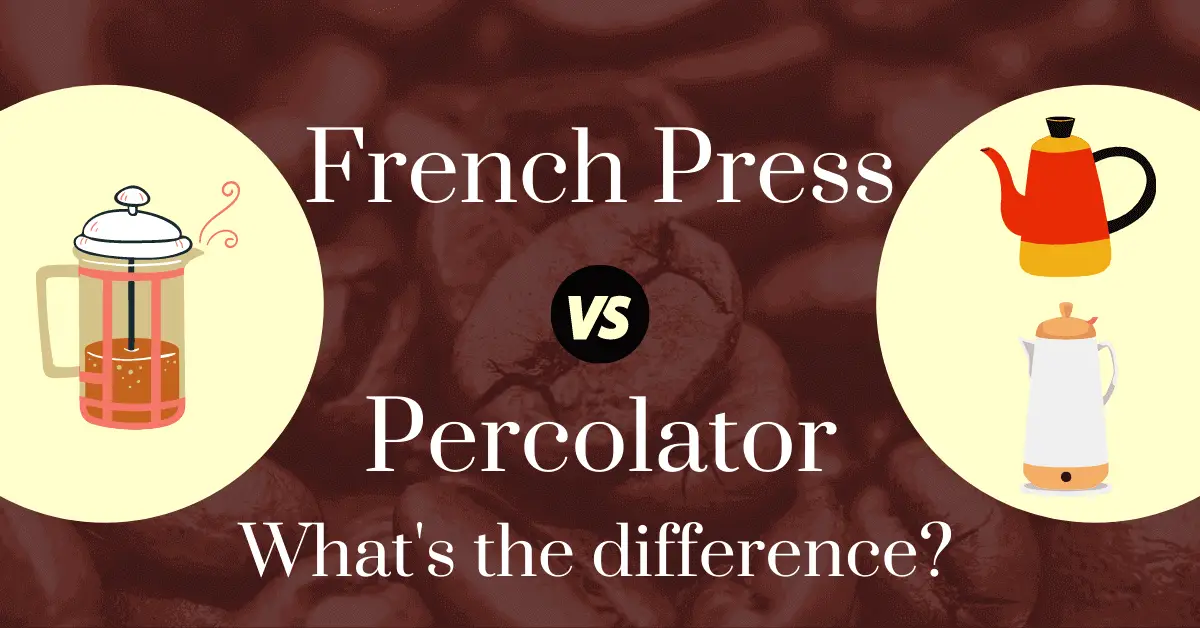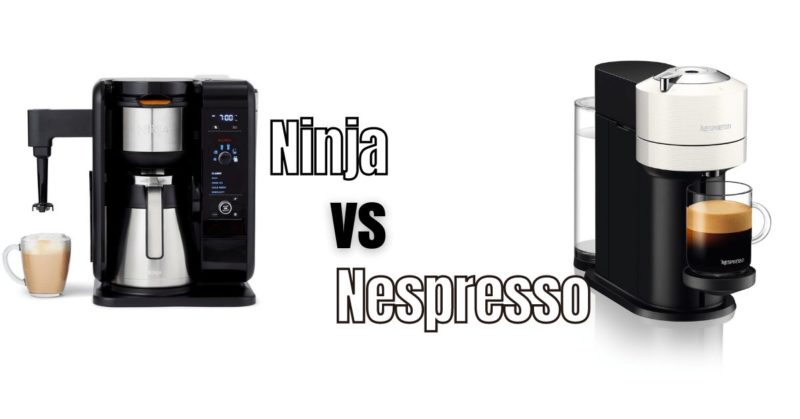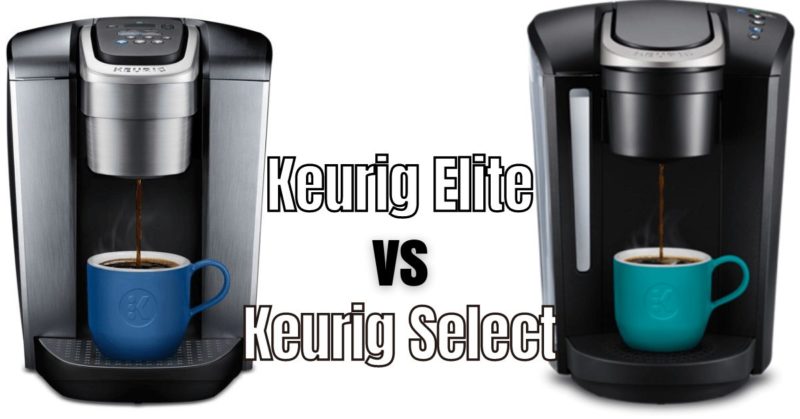This post may contain affiliate links. Please read my disclosure for more info.
Simplicity rules in the world of coffee. Whether it’s a straightforward method or something more complex like making espresso, we’re all in. This love for easy brewing has brought back favorites once forgotten, such as the percolator and the French press. It’s all about enjoying the simple pleasures of coffee.
Today, we’re diving into the world of French Press and Percolator coffee makers! We’ll explore how they differ in the coffee they brew, their sizes, how easy they are to use, and more. Get ready to discover what each offers to your coffee experience—both in taste and convenience!
Quick Comparison: French Press vs Percolator
| French Press | Percolator | |
|---|---|---|
| Brewing type | Immersion | Drip |
| Capacity | 3–8 cups on average | 8–12 cups on average |
| Brew time | 3–5 minutes | 7–10 minutes |
| Pros | Easy to use. Versatile. Good for beginners. Can double as a milk frother. | Great for making large batches of coffee. Electric percolators are very easy to use |
| Cons | Not good for making strong coffee. Grounds usually seep into your cup. Hard to clean. | Coffee is often bitter. Not very versatile. Stovetop percolators are harder to use |
French Press and Percolator: Brewing Methods
The French press steeps coffee, a fancy way to say it soaks it.

Steeping your coffee is a top-notch brewing technique. Unlike paper filters, a metal filter lets those rich coffee oils flow right into your cup. Why does this matter? Well, those oils pack a lot of the flavor and aroma that make your coffee taste amazing. Learn more about brewing methods here.
Steeping your coffee brings out its rich flavors and delightful aromas, making each sip more enjoyable. It also gives the coffee a fuller body, making it feel thicker and more satisfying. This method truly enhances your coffee experience.
While the French press gives us delicious coffee thanks to not using a filter, there’s a downside. Without a filter, coffee grounds can slip into your cup, making your drink bitter and unpleasant. Plus, finding bits of coffee grounds in your mouth is not a nice feeling at all!
Not all coffee oils are your friend. Specifically, cafestol can boost your cholesterol if you drink it often. So, think twice before calling any coffee “healthy”!
Percolating is a way to make drip coffee. Unlike just mixing water and coffee together, drip brewing involves water slowly dripping through coffee grounds in a filter. Imagine using a Hario V60 or the auto-drip coffee maker in your kitchen. These devices make coffee by letting water flow through the coffee grounds. It’s a simple yet effective way to brew your favorite cup!
Drip coffee brewing is awesome for a reason. It brings out a perfect balance in your cup, especially when talking about the acidity and bitterness. People love it because it’s gentle on both, giving you a wonderfully balanced taste every time.
Ever wondered how percolators stand out from other drip coffee makers? It’s all about how they brew! Percolators cycle water through coffee grounds over and over, making your coffee richer with each pass. While electric percolators manage this magic on their own, stovetop versions can give you extra-strong (but beware, possibly bitter) coffee if you let them brew too long.
Capacity of Percolator and French Press
A percolator shines when it comes to brewing large amounts of coffee. Originally created to make coffee in bulk, its main advantage is its ability to produce plenty of coffee at once, even if it sacrifices some quality.
Percolators, often seen at big events, can actually be quite small. Take the Farberware electric percolator, for instance. It’s perfect for small spaces, brewing anywhere from two to four cups. Ideal for coffee lovers with limited counter space!
Percolators come in various sizes, but the 8 and 12 cup versions are the favorites. Unlike single-serve coffee makers, they’re not for just one cup at a time.
On average, a percolator makes ten cups of coffee. But what about using a French press?
French Presses are small, but they pack a punch for coffee lovers.
The French press can be tricky. It’s true, especially since many affordable ones are crafted from fragile plastic or glass, unlike the robust Chemex.
To save money, consider your options. A Chemex might set you back about $50, but you can find French presses for as little as $10. For a fancier choice, a stainless steel Frieling French press exists, though it’s pricier.
Most French presses are on the smaller side, perfect for making just enough coffee for you or to share with a few friends. It’s not the go-to for large batches, but it’s ideal for personal or small group brewing. Enjoy a cozy cup for yourself or with your roommates.
French presses usually brew 3–8 cups, perfect for most homes, but not a substitute for your 12-cup drip machine.
Opt for a 12 cup French press if you’re after something larger and more eye-catching. These are rare gems, often crafted from durable stainless steel instead of flimsy plastic. You’ll usually find them in coffee shops, catering to the caffeine needs of multiple customers. However, they might be too bulky for everyday use at home.
Brew time Difference Between French Press and Percolator
When it comes to making coffee, how fast a machine can brew is a big deal, right after taste. Check out the latest espresso machines for home use. They’re all about speed. Some can whip up your coffee in just 90 seconds, while others do it in under a minute! Pretty cool, huh?
Of course, I pay close attention to the brewing time for each method, because it’s not just about waiting for our caffeine fix. The time it takes to brew affects the coffee’s taste, making each sip a unique experience.
Making coffee with a French press? It’s quick and easy, taking just 3 to 5 minutes. Here’s a cool part: you’re in charge of the strength. Brew for 3 minutes for a lighter taste or go up to 5 minutes for a bolder, stronger coffee. It’s all about what you prefer!
The French press takes its time to brew, unlike the quick Moka pot, which can whip up coffee in under two minutes if you prep right.
Electric percolators brew coffee on their own terms, not yours. You can’t decide when to stop the brewing; it ends when it decides, typically after about eight minutes, but this varies by machine. If you prefer more control, stovetop percolators let you call the shots, though brewing still takes about 7–10 minutes to get your coffee ready.
Brewing coffee for eight minutes? That’s way too long! In that time, the rich flavors of your coffee disappear, leaving you with mostly bitterness. Why? Because the heat for so long destroys the sweet and acidic tastes we love. Keep your brewing time shorter to enjoy a delicious cup of coffee.
Though it’s simple, this method makes a lot of coffee easily, though it might not be the most efficient way.
French Press or Percolator: Which Is Easier to Use?
Finally, I always check how easy a brewing method is to use before buying it.
The way you make coffee can really shape your experience. If you’ve got time and patience, trying it manually can be rewarding. But for those rush moments, an automatic machine is a lifesaver.
The French press is super simple to use. Just add coffee grounds, pour in water, and wait a bit. The trick is learning to press the plunger gently and pour smoothly to avoid gritty coffee in your cup. It’s all about the finesse!
Cleaning your coffee gear can be a hassle, especially the metal filter. It often requires soaking to remove all the grime. If you don’t wash it immediately, it becomes even more challenging. Keeping your equipment clean is essential for great coffee.
The French press is super simple to brew with, and I totally agree. But…
Electric percolators make brewing coffee a breeze. They’re super handy, especially the electric ones that handle everything for you. While stovetop versions require a bit more effort, electric models often come with a handy indicator light that tells you exactly when your coffee is ready to enjoy.
Percolators and auto-drip coffee machines often get compared, especially since they both can make lots of coffee at once. However, percolators win on simplicity. With just a single button, they’re super easy to use – no confusing digital screens at all. That’s why you’ll find percolators being the go-to at big events, making huge batches of coffee effortlessly.
These stainless steel wonders are super easy to use, no tech skills needed!
Frequently Asked Questions
Are Moka pots and percolators the same thing?
This is a very common mistake to make because, well, they look almost exactly the same. A percolator and a Moka pot have a very, very similar—at least on the outside.
On the inside, however, they are different. The most important difference is the brewing method used to extract the coffee. The percolator works, you guessed it, by percolating. The Moka pot uses steam pressure.
The Moka pot is a very old device that was designed to mimic the steam-driven espresso machines of the early 20th-century. They use steam to create pressure, which shoots water upwards through the coffee grounds.
The percolator doesn’t really do this. As I explained before, it sends water upwards to where the coffee grounds are. Then, the drips down, and the process starts again. It is a process of repeated percolation that doesn’t really exist anywhere else outside of this brewing device. Moka pots don’t repeat the process—water only goes through the grounds once.
What does percolation mean?
Percolation is the act of extracting soluble chemicals from solid materials by passing a liquid solvent through them. That’s pretty general, though. Here, we specifically mean extracting coffee by passing (hot) water through the coffee grounds.
While this particular brewing device is called the percolator, there are actually many that use this brewing technique: The V60, the Chemex, and even good ol’ drip coffee machines use percolation to brew coffee.
What the percolator does have that makes it stand out is that it percolates repeatedly. Instead of passing the liquid through the grounds just one time, it does so several times. The liquid passes through, it comes down where it is heated and sent up again, and so on and so forth.
French Press vs Percolator: Which Is Better?
Choosing between two unique brewing methods isn’t about finding a winner. It’s about what appeals to you more. Consider the brewing experience and the taste of the coffee. Go with what excites your taste buds and coffee-making journey.
For a fast and simple way to make rich coffee, try a French press. If you love bold coffee or need to make a lot at once, an electric percolator is perfect. Prefer to control the brewing process, even if it might turn out bitter? Then, stovetop percolators are your best bet.
If you find traditional brewing methods a bit too much, why not consider Nespresso machines or Keurig coffee makers? They’re quicker and easier to use than a French press or percolator. For more insights, take a look at my guide on whether Nespresso is worth it to help you decide if a pod-based coffee maker is right for you.




